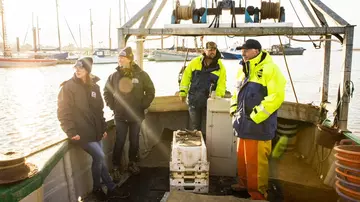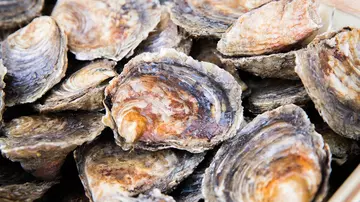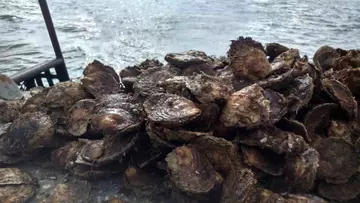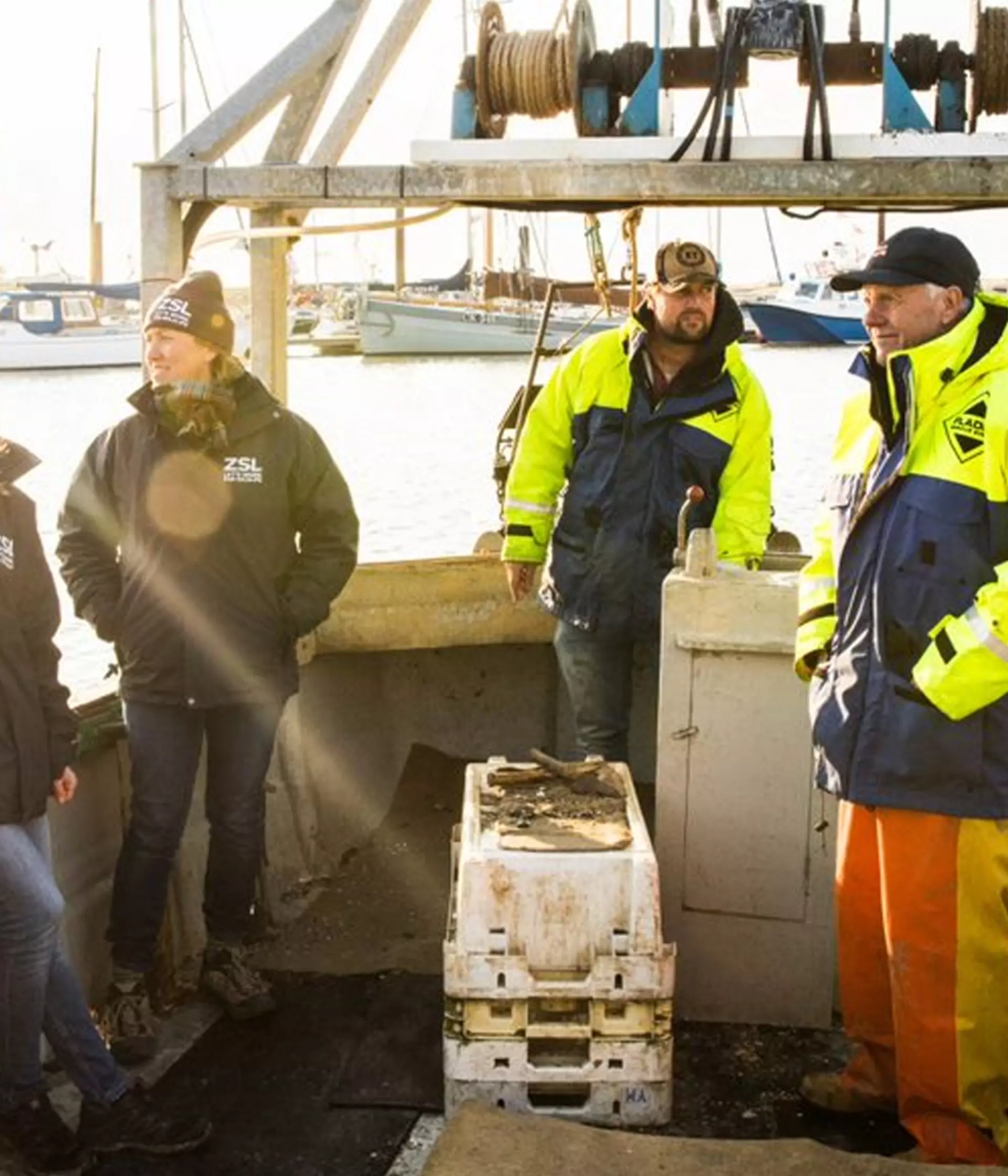
Thea Cox, Conservation Biologist at ZSL, and Celine Gamble, Coordinator of the Native Oyster Network, explain how they are working to bring our native oyster species back from the brink.
Protecting oyster ecosystems
You always feel a great sense of adventure as you cross the Strood causeway, over the green saltmarsh and onto Mersea, an Essex island cut off from the mainland at high tide. Once across, meandering over to West Mersea’s Coast Road you’ll find beautiful views of the Blackwater estuary – it is here that you’ll also discover one of the UK’s sites for native oyster restoration and what is bringing ZSL conservationists like us to the island’s shores.
Wildlife conservation in the UK

The star of the show – the native oyster, Ostrea edulis – is a small creature capable of making some very big changes. Known as ‘ecosystem engineers’, they filter our water clean and create reefs that support huge amounts of aquatic life including young fish. These oysters start their life as tiny fertilised eggs protected inside a mother oyster’s brood chamber. After ten days or so, the tiny shelled young are released and use their ‘foot’ to seek out their preferred place to settle. This settlement site is critical as it is here where the oyster will stay, growing by just 1-2cm in its first year of life.
Essex oysters
Essex has an extraordinary oyster heritage, stretching as far back as we can see into our human history. The Romans were particularly keen on the native oyster and records show that they ate them in their thousands at feasts. In the early 17th Century oyster trade was booming and by the 19th Century more than 200 million native oysters were sold annually on the London market, even with the population in London being just a fraction of what it is now at less than 2 million people!

Sadly, native oyster numbers have since plummeted as a result of overharvesting, disease, pollution and habitat loss. But, ZSL, local oystermen, scientists, government and other conservation organisations are working hard to change this, drive forward evidence-based marine restoration and bring oysters back to a thriving Essex estuary. Together, we’re known as the Essex Native Oyster Restoration Initiative - ENORI.

This year has been a particularly exciting one for ENORI. We’ve kicked off a programme of active intervention and ground-breaking science in a 2km2 Restoration Box located within the Blackwater, Crouch, Roach and Colne Estuaries Marine Conservation Zone. Our first step in May this year was the addition of old oyster and cockle shell as well as gravels onto the seabed – known as cultch. As the young oysters search for their settlement site, they must find a hard substrate on which to land and grow. Historically, this would have been other shells but through the process of intensive harvesting this supply of old oyster shells has been lost in the area. ENORI are replacing this cultch with recycled oyster shells, as well as other local sources of shell and stone. These are oysters that have been harvested in the Blackwater estuary, traded in London’s Borough Market, enjoyed by the likes of you and I, and then the shell returned to the water from which it came. As well as restoring the preferred substrate of our native oysters, ENORI have also started to create a broodstock or ‘mother oyster sanctuary’ to increase the number of young produced in the Restoration Box. Over 10,000 mature oysters were laid down in June this year! Now, we must carefully monitor the site and wait with fingers crossed, hoping to see young oysters settle in our Restoration Box in not too long. Make sure you get the latest photos and updates by checking out @EssexOyster.

The story of our native oyster doesn’t end in Essex though. A few remaining populations can be found in the Solent and the River Fal, as well as in the Thames estuary. These other populations of native oyster have seen similar declines. In fact, across Europe we now have fewer than 5% of native oysters compared to historic levels. It is hard to picture that hundreds of years ago native oyster reefs were a common feature of our UK coastline and our dinner plates!
Native oyster beds are now thought to be one of the most threatened marine habitats in Europe. In recent years the environmental and cultural value of native oysters has been recognised and it has become increasingly clear that in order to bring the species back from the brink, we need to step in (or more accurately dive in) and help! The Essex Native Oyster Restoration Initiative is one of seven ambitious oyster restoration projects that have been set up around the UK and Ireland to do just that. Behind each of the projects is a hard-working team, determined to “crack the code” to successfully restoring native oysters back to their local area. The projects use a range of different methods, including creating a “mother oyster” sanctuary, oyster “hotels” suspended under marina pontoons, and sending divers down to the seabed to place oysters into their new home.
Protecting one of the most endangered marine habitats in Europe. In the UK wild native oyster populations have declined by over 95%.
However, to effectively restore native oysters on a national scale collaboration between projects is key, which is where the Native Oyster Network comes in. The Network was set up in 2018 by ZSL and the University of Portsmouth to support the growing need of the species, habitat and people working to restore native oysters in the UK & Ireland. The Network is growing rapidly and is now 120+ members strong, including academics, conservationists, oystermen, and NGO’s, who are all working to restore the species. The Network works to coordinate ecologically coherent restoration, whilst injecting optimism and empowerment within the restoration community, by sharing successes and bringing our heads together to navigate our way through the barriers we face when restoring the species. To follow the national restoration efforts and Network updates follow @NativeOysterNet.
The impact of these local interventions and sharing lessons learnt will help to shape national native oyster recovery and marine restoration in the future. Despite the challenge of restoring a species that has faced such a vast decline, we are optimistic that we can bring back this forgotten ecosystem and the world will once again be an oyster for the UK’s population of Ostrea edulis.
